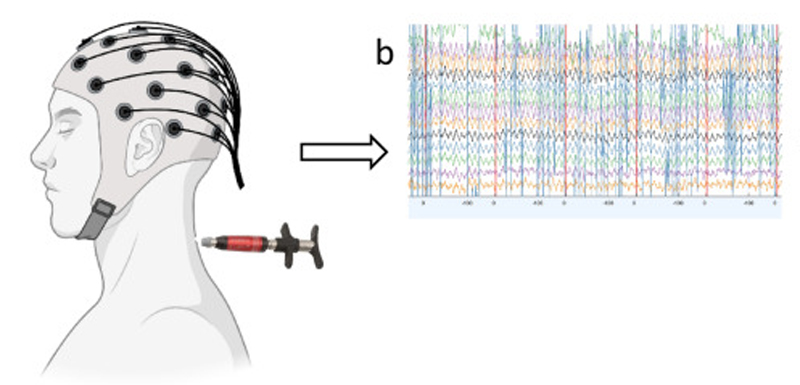Altered Central Integration of Dual Somatosensory Input After Cervical Spine Manipulation
SOURCE: J Manipulative Physiol Ther. 2010 (Mar); 33 (3): 178–188 ~ FULL TEXT
Heidi Haavik Taylor, PhD, BSc, Bernadette Murphy, PhD, DC
Director of Research,
New Zealand College of Chiropractic,
Auckland, New Zealand.
heidi.taylor@nzchiro.co.nz
OBJECTIVE: The aim of the current study was to investigate changes in the intrinsic inhibitory interactions within the somatosensory system subsequent to a session of spinal manipulation of dysfunctional cervical joints.
METHOD: Dual peripheral nerve stimulation somatosensory evoked potential (SEP) ratio technique was used in 13 subjects with a history of reoccurring neck stiffness and/or neck pain but no acute symptoms at the time of the study. Somatosensory evoked potentials were recorded after median and ulnar nerve stimulation at the wrist (1 millisecond square wave pulse, 2.47 Hz, 1 x motor threshold). The SEP ratios were calculated for the N9, N11, N13, P14-18, N20-P25, and P22-N30 peak complexes from SEP amplitudes obtained from simultaneous median and ulnar (MU) stimulation divided by the arithmetic sum of SEPs obtained from individual stimulation of the median (M) and ulnar (U) nerves.
RESULTS: There was a significant decrease in the MU/M + U ratio for the cortical P22-N30 SEP component after chiropractic manipulation of the cervical spine. The P22-N30 cortical ratio change appears to be due to an increased ability to suppress the dual input as there was also a significant decrease in the amplitude of the MU recordings for the same cortical SEP peak (P22-N30) after the manipulations. No changes were observed after a control intervention.
There are more articles like this @ our:
CONCLUSION: This study suggests that cervical spine manipulation may alter cortical integration of dual somatosensory input. These findings may help to elucidate the mechanisms responsible for the effective relief of pain and restoration of functional ability documented after spinal manipulation treatment.
Key Indexing Terms: Somatosensory Evoked Potentials, Neuronal Plasticity, Spinal Manipulation, Sensory Filtering, Sensorimotor Integration, Chiropractic
From the FULL TEXT Article:
Background
The effectiveness of spinal manipulation for improving spinal function and relieving acute and chronic low back and neck pain has been well established by outcome-based research. [1-7] However, the mechanism(s) responsible for the effective relief of pain and restoration of functional ability after spinal manipulation are not well understood, as there is limited evidence to date regarding the neurophysiologic effects of spinal manipulation.
There is a growing body of evidence suggesting that the presence of spinal dysfunction of various kinds has an effect on central neural processing. For example, several authors have suggested that spinal dysfunction may lead to altered afferent input to the central nervous system (CNS). [8-12] It is well documented in the literature that altered afferent input to the CNS leads to plastic changes in the way that it responds to any subsequent input [13-19]; thus, it is possible that the presence of spinal dysfunction also leads to central neural plastic changes. Several recent studies indicate that spinal manipulation of dysfunctional cervical joints leads to alterations in central processing and sensorimotor integration. [20-22] One of these studies demonstrated that spinal manipulation of dysfunctional cervical joints alters cortical processing and sensorimotor integration for at least 20 to 30 minutes after the manipulations, [22] as reflected by altered N20 and N30 somatosensory evoked potential (SEP) peak amplitudes. The N20 SEP peak reflects processing of peripheral information at the level of the primary somatosensory cortex. [23-25] The N30 SEP peak reflects central sensorimotor integration processing involving primary sensory cortex, primary motor cortex, premotor cortex, and deeper brain structures such as the basal ganglia. [26-33]
Read the rest of this Full Text article now!




Leave A Comment